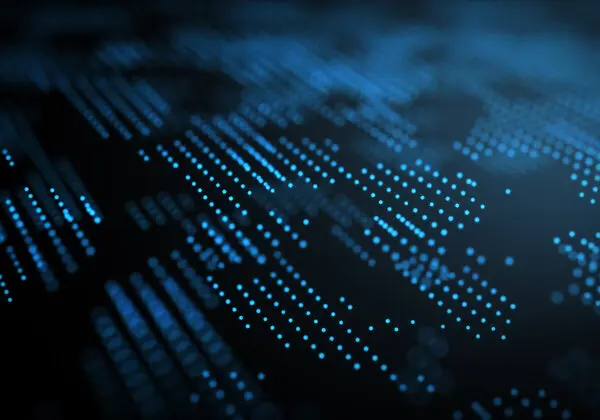Revolutionising Educational Environments Through AI

Artificial Intelligence (AI) has revolutionised various sectors, including business, healthcare, and the arts, with one of its most profound impacts occurring in education. This transformative technology has progressed from simple educational tools in the 1980s to sophisticated applications that personalise learning and enhance outcomes. AI extends beyond simple automation; it reshapes teaching methods and enriches the acquisition of knowledge. As it continues to evolve, AI introduces groundbreaking opportunities for inclusive and effective learning, promising a future where education adapts to every student's needs, including those with special educational requirements.
In various domains, AI is rapidly advancing, streamlining processes that were once manual. Particularly in education, this technology assists educators in crafting personalised content and empowers students with tailored learning paths. Yet, as these technological tools proliferate, a crucial question arises: How inclusive are they? It is vital to assess whether these innovations adequately support individuals with challenges such as dyslexia and brain trauma.
The Development of AI in Education
The educational landscape has been significantly influenced by robotics and AI since the development of early educational kits like Lego Mindstorms in the 1980s.

Technologies such as Intelligent Tutoring Systems (ITS) and advancements in Natural Language Processing (NLP) have revolutionised how subjects like science, math, and languages are taught, allowing for personalised learning experiences at scale.
Current AI Applications in Education
With the latest evolution of generative AI technologies, more solutions are being developed transforming digital learning and enhancing student engagement. Below there are some examples of existing applications:
SchoolXpress: SchoolXpress uses AI to transform traditional learning materials into interactive content, hinting at its potential to reshape digital education.
Eduaide.Ai: is a platform that helps educators by offering AI-assisted lesson planning, adaptive content, feedback generation, and assessment tools. It reduces administrative workload, enabling teachers to focus on student engagement and instructional innovation.
Khanmigo: K2teamsteamshanmigo offers personalised tutoring across Khan Academy's extensive library of exercises and videos, enriching learning with activities like debates, essay feedback, and career growth coaching.
Duolingo Max: Duolingo Max utilises GPT-4, one of the most advanced AI models developed by OpenAI, to provide a more personalised and effective learning experience.
Allhere: AllHere is an AI-driven platform providing 24/7 personalised text messaging support to enhance family engagement and improve student attendance and success in over 9,100 schools nationwide.
Capacity: Capacity is an AI-powered solution designed to enhance the efficiency and quality of services in educational institutions by providing students, faculty, and staff instant access to information through a simple chat interface, ultimately aiming to lower costs and improve student outcomes.
AI and Inclusive Education
Most education systems are not fully prepared to support students with special needs. These learners, who may face physical, mental, or behavioural conditions, need an education that is not only inclusive but also customised to their individual learning needs.

Learners with Dyslexia
Challenges in Traditional Settings:
- Reading and Writing Difficulties: Learners with dyslexia often struggle with decoding words, spelling, and understanding written text, making traditional reading and writing tasks highly challenging.
- Slow Processing Speed: They may require more time to process written information, leading to slower performance in time-pressured tasks.
- Limited Support: Without specialised teaching methods or tools, traditional classrooms may not provide the support these learners need to succeed.
Impact on Learning and Outcomes:
- Frustration and Low Self-Esteem: Continuous struggles can lead to frustration, decreased motivation, and low self-esteem among learners with dyslexia.
- Academic Performance: These challenges can directly affect their academic performance, potentially leading to lower grades and decreased educational attainment.
- Social and Emotional Well-being: The constant struggle and potential for negative feedback can impact social interactions and emotional health.
Learners with Brain Trauma
Challenges in Traditional Settings:
- Cognitive Impairments: Brain trauma can result in impairments in concentration, memory, problem-solving, and information processing, making traditional learning formats and content challenging to follow.
- Physical Limitations: Depending on the severity and location of the injury, physical disabilities may also be present, requiring accommodations that are not available in all educational settings.
- Emotional and Behavioral Changes: Brain injuries can lead to emotional dysregulation and behavioural changes, which can disrupt learning and social interactions within traditional educational frameworks.
Impact on Learning and Outcomes:
- Adaptation Difficulties: The need for significant adaptations in teaching strategies, classroom environments, and educational materials can hinder the learning process for individuals recovering from brain trauma.
- Social Integration: Emotional and behavioural changes, alongside cognitive and physical challenges, can complicate social interactions and integration with peers, affecting overall educational experiences.
- Recovery and Rehabilitation: Traditional educational settings may not be equipped to support the rehabilitation needs of learners with brain trauma, potentially slowing recovery and impacting long-term educational and life outcomes.
AI-driven technologies and tools have the potential to revolutionise learning for these students by offering tailored educational content, fostering skill development, and enhancing accessibility, thus creating a more equitable and effective educational landscape.
Review of Existing AI Technologies for Inclusive Education
There are some educational tools powered by AI designed to assist students with special needs including dyslexia and brain trauma. These tools leverage the capabilities of AI to provide personalised learning experiences, adapt to the unique needs of each student, and offer support in various forms.
Assessment of Existing Tools
Text-to-Speech and Speech-to-Text Applications: These AI-powered tools can greatly assist dyslexic learners by reading text out loud and converting spoken language into text, making reading and writing tasks more accessible. These reading assistants can also help by highlighting text as it is read aloud, adjusting text size and spacing, and providing definitions or synonyms to support vocabulary development. Here are some example solutions:
Future Directions for AI in Special Needs Education
Rehabilitation Software: AI-powered software can support individuals recovering from brain trauma by offering personalised cognitive exercises, tracking progress, and adjusting the difficulty level based on recovery pace. VR combined with AI can create immersive environments to safely practise cognitive and motor skills, enhancing rehabilitation efforts. Here are some examples:
These tools are part of a growing field of assistive technologies that aim to make learning and daily life easier for individuals with various challenges. However, the effectiveness of these tools can vary, and they should be considered as part of a broader therapeutic or educational strategy.
The market seems to have fewer applications specifically targeted at enhancing education for individuals with special needs. However, there is a notable emphasis on developing tools aimed at mitigating cognitive impairments.
Final thoughts
AI holds a transformative potential for making learning environments more inclusive. The advancements in AI-powered educational tools, from personalised tutoring platforms like Khanmigo to innovative solutions such as Duolingo Max and Capacity, are impressive and demonstrate the ability to meet the diverse needs of learners with special needs.
Yet, the journey towards fully inclusive education is far from complete. While significant strides have been made using AI to address cognitive impairments and enhance learning accessibility, there remains a crucial need for more targeted applications aimed directly at enriching the educational experience for individuals with special needs. By embracing this challenge, we can unlock the full potential of AI in education, ensuring that every student has the opportunity to thrive in a learning environment that recognises and supports their unique needs.
Let us solve your impossible problem
Speak to one of our industry specialists about how Artificial Intelligence can help solve your impossible problem

















